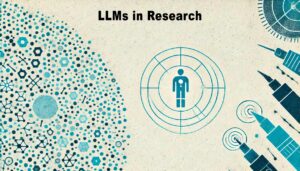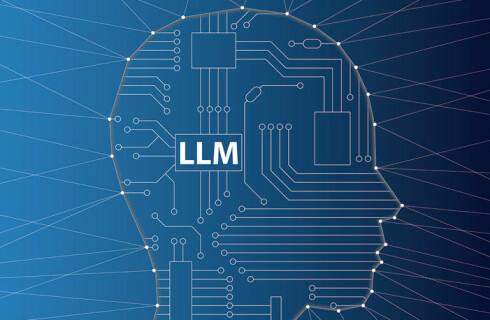Table of contents
In recent years, large language models (LLMs) have become increasingly accessible to students and researchers alike. Tools like GPT-4, Claude, and other AI writing assistants offer unprecedented opportunities to support the academic writing process. From brainstorming ideas to generating drafts and revising complex arguments, these tools can enhance productivity, clarity, and efficiency. However, using LLMs effectively requires careful planning, critical evaluation, and adherence to academic standards to ensure that the work remains rigorous, original, and reflective of the author’s voice. This article explores practical strategies for integrating LLMs into research drafting, emphasizing planning, drafting, and revising while maintaining the integrity and depth of scholarly work.
 Planning with LLMs: Structuring Your Research Thoughtfully
Planning with LLMs: Structuring Your Research Thoughtfully
The first step in any successful academic project is careful planning. LLMs can assist students by providing frameworks, outlining potential arguments, and suggesting key references. However, it is essential to treat AI outputs as a starting point rather than a finished product. Begin by clearly defining your research question and objectives. A well-formulated question acts as a compass, guiding subsequent drafting and revision. LLMs can then help generate possible angles for exploration, highlight relevant subtopics, or identify gaps in existing literature.
For example, a student exploring climate policy might ask an LLM: “What are emerging research gaps in climate adaptation strategies?” The model can provide a structured overview of current debates, controversies, and potential research directions. Similarly, a history student examining immigration trends could request: “Summarize underexplored perspectives in early 20th-century immigration studies in the United States.” Such outputs can help shape a research roadmap, highlighting opportunities for unique contributions.
It is crucial, however, to cross-check AI-generated suggestions with peer-reviewed sources. While LLMs can produce coherent and seemingly authoritative information, they are not always accurate and may miss nuances. Students should verify facts, identify primary sources, and critically assess the relevance of the suggested content. A good planning phase also involves creating a detailed outline, noting where AI-generated ideas can supplement personal analysis. This ensures that the final paper maintains scholarly depth and originality.
LLMs can also support collaborative planning. Group projects often involve coordinating multiple perspectives, which can be challenging. Using an AI tool, students can generate a shared outline or list of discussion points, providing a neutral starting point for negotiation and consensus-building. By integrating AI into early-stage planning thoughtfully, students can reduce uncertainty, clarify their research aims, and structure their work efficiently.
Drafting: Turning Ideas into Coherent Texts
Once planning is complete, LLMs can assist in drafting sections of the research paper. One of the primary advantages is the ability to overcome writer’s block, particularly when articulating complex ideas or bridging sections of a paper. Students can provide the LLM with an outline or specific prompts, such as: “Draft an introduction explaining the impact of urban heat islands on public health, with references to recent studies.” The AI can produce a coherent initial draft that the student can then refine and personalize.
It is important to approach AI-generated drafts critically. While the text may appear polished, students should review content for accuracy, logical consistency, and alignment with their argument. The draft should be seen as a scaffold or creative springboard rather than a final product. Editing and reworking the text to include personal analysis, real data, or nuanced discussion ensures that the paper reflects the student’s engagement with the research rather than relying solely on automated text.
LLMs can also suggest transitions and connections between ideas, which is particularly helpful for maintaining narrative flow. For example, an AI might propose a paragraph linking two seemingly disparate sections, improving coherence. However, students should evaluate whether such transitions fit the argument’s logic. Blindly accepting AI suggestions risks producing a superficially smooth text that lacks analytical depth.
Another advantage of LLMs in drafting is the ability to experiment with multiple approaches. A student can prompt the AI to generate alternative introductions, paragraph structures, or stylistic tones. Comparing these options allows the writer to select the approach that best conveys their ideas while remaining academically rigorous. This iterative process encourages critical evaluation, teaching students how to balance clarity, style, and substance in their writing.
Revising with LLMs: Enhancing Clarity Without Compromising Integrity
Revision is a critical phase in academic writing, and LLMs can play a supportive but not dominant role. AI tools can suggest alternative phrasing, improve sentence structure, and clarify complex passages. For instance, a student may ask the LLM: “Rewrite this paragraph to improve clarity while maintaining technical accuracy.” The model can provide several options, giving the student a choice and highlighting ways to enhance readability without oversimplifying the argument.
Additionally, LLMs can assist in ensuring consistency across sections. They can detect repeated phrasing, suggest smoother transitions, and help maintain tone uniformity. Students working on long projects or collaborative papers may find this feature particularly useful, as it reduces the risk of disjointed writing caused by multiple contributors.
However, vigilance is required during revision. AI-generated suggestions may inadvertently introduce errors, factual inaccuracies, or stylistic inconsistencies. For example, the AI might incorrectly summarize a source or misrepresent a complex theoretical concept. Human oversight is essential to verify every reference, maintain argument integrity, and preserve scholarly voice. Revision with LLMs should be a partnership, combining the efficiency of AI with the critical judgment of the student.
LLMs can also provide feedback on paragraph cohesion and logical flow, helping students identify weak points in their reasoning. By iteratively revising sections with AI assistance, students can refine their work, producing papers that are both clear and analytically robust.
Ethical Considerations and Best Practices
Using LLMs in academic writing raises important ethical questions. Students must ensure that AI assistance does not cross into plagiarism or misrepresentation of authorship. Transparency is essential: if AI tools significantly contributed to drafting or revising, disclosure may be required depending on institutional guidelines. Additionally, students should avoid copying AI-generated content verbatim, instead integrating it into a broader framework of personal analysis and critical reflection.
The following table summarizes recommended practices for responsibly integrating LLMs into academic writing:
| Step | Recommended Practices | Notes |
|---|---|---|
| Planning | Use LLMs to brainstorm topics, outline ideas, and identify research gaps | Cross-check AI suggestions with peer-reviewed sources |
| Drafting | Generate initial drafts based on prompts or outlines | Edit, rewrite, and supplement with original analysis and personal voice |
| Revising | Improve clarity, coherence, and readability | Verify accuracy, consistency, and alignment with academic standards |
| Ethical Use | Disclose AI assistance if required, avoid verbatim copying | Ensure originality, proper citation, and compliance with institutional guidelines |
By combining careful planning, thoughtful drafting, and diligent revision, students can leverage LLMs to enhance their academic writing without compromising integrity. LLMs should not replace critical thinking, careful research, or personal engagement with the material; instead, they are most effective as tools that amplify human effort.
Conclusion
Large language models have the potential to transform academic writing, making the process more efficient, structured, and accessible. When used responsibly, they can support idea generation, drafting, and revision, helping students navigate complex research topics and organize their thoughts coherently. The key lies in striking a balance: embracing AI as a supportive tool while maintaining critical thinking, originality, and scholarly rigor. By following structured workflows, cross-checking AI outputs, and reflecting deeply on the content, students can harness the benefits of LLMs while producing authentic, high-quality academic work that meets the standards of their institutions and contributes meaningfully to their fields.
